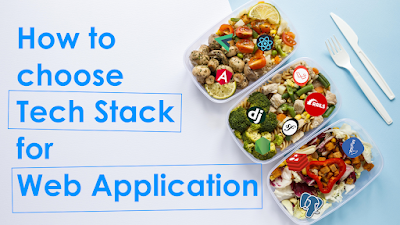How to choose tech stack for web application development
Choosing the right tech stack for web application development is a crucial decision that can significantly impact the success and scalability of your project. Here are some key steps and considerations to help you make an informed decision:
Define Your Project Requirements:
- Clearly outline your project's goals, features, and functionalities.
- Identify the target audience and their preferences.
- Consider scalability, performance, and security requirements.
Understand Your Team's Expertise:
- Evaluate the skills and expertise of your development team.
- Choose technologies that align with the team's strengths to ensure efficient development and maintenance.
Consider the Type of Web Application:
- Different types of web applications (e.g., e-commerce, social media, content management systems) may have specific technology requirements.
- Choose technologies that are well-suited to the nature and purpose of your application.
Frontend Technologies:
- Select a frontend framework or library based on your team's expertise and project requirements. Popular choices include React, Angular, or Vue.js for building interactive user interfaces.
- Consider the responsiveness and user experience across different devices.
Backend Technologies:
- Choose a backend programming language and framework. Common choices include Node.js, Python (Django or Flask), Ruby on Rails, Java (Spring Boot), or PHP (Laravel).
- Consider factors such as scalability, ease of integration, and community support.
Database Selection:
- Choose a database based on your data storage and retrieval needs. Options include relational databases (e.g., MySQL, PostgreSQL) or NoSQL databases (e.g., MongoDB, Cassandra).
- Consider factors like data consistency, scalability, and ease of use.
Server Hosting and Deployment:
- Decide on a hosting platform (e.g., AWS, Azure, Google Cloud) based on your budget, scalability requirements, and familiarity with the platform.
- Choose a deployment strategy (e.g., containerization with Docker, serverless architecture) that aligns with your project goals.
Security Considerations:
- Implement security best practices, such as data encryption, secure authentication, and protection against common web vulnerabilities (e.g., SQL injection, cross-site scripting).
- Regularly update dependencies and libraries to patch security vulnerabilities.
Scalability and Performance:
- Consider the potential scalability needs of your application and choose technologies that can handle growth.
- Optimize performance through caching mechanisms, content delivery networks (CDNs), and efficient database queries.
Community and Documentation:
- Choose technologies with active and supportive communities to benefit from ongoing development, updates, and problem-solving resources.
- Good documentation is crucial for smooth development and maintenance.
Cost Considerations:
- Evaluate the costs associated with different technologies, hosting platforms, and third-party services.
- Consider both initial development costs and ongoing operational costs.
Testing and Maintenance:
- Choose technologies that support robust testing practices, including unit testing, integration testing, and end-to-end testing.
- Consider the long-term maintenance requirements and the availability of skilled developers for the chosen tech stack.
Remember that the choice of a tech stack may involve trade-offs, and it's important to find a balance that aligns with your project's goals and constraints. Regularly reassess your tech stack as your project evolves and technology trends change.

No comments:
Post a Comment